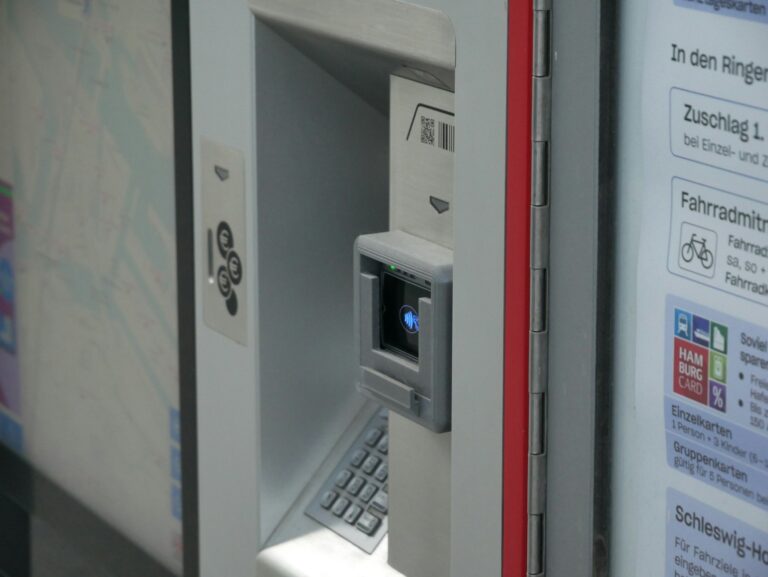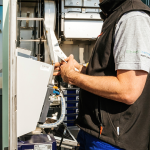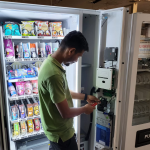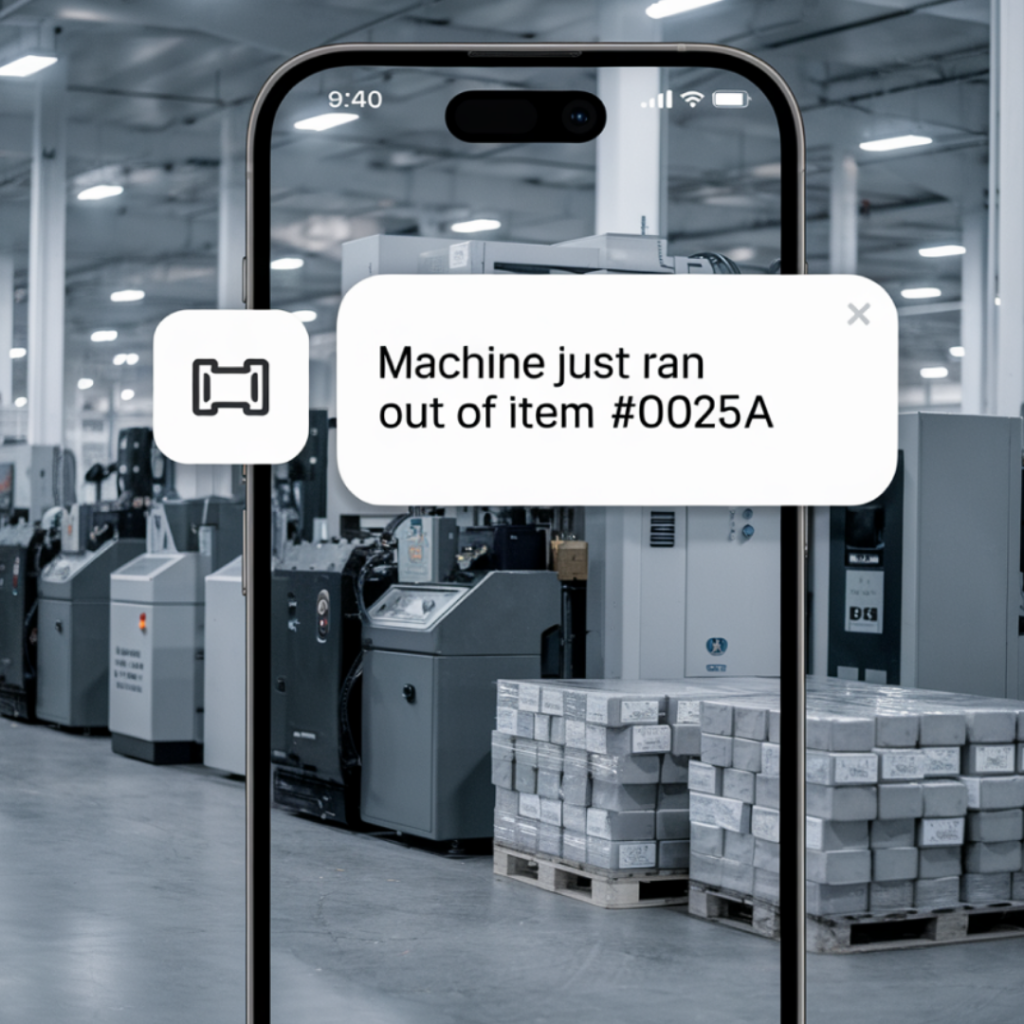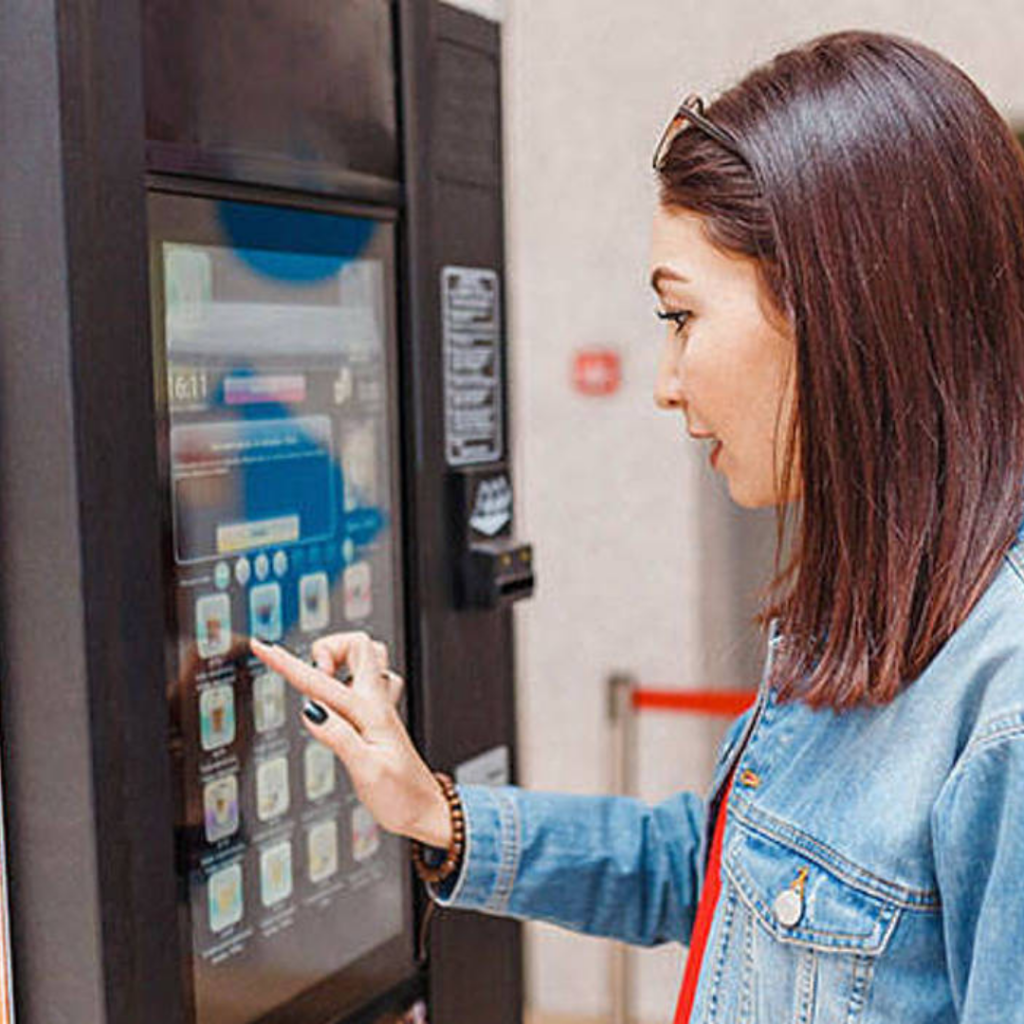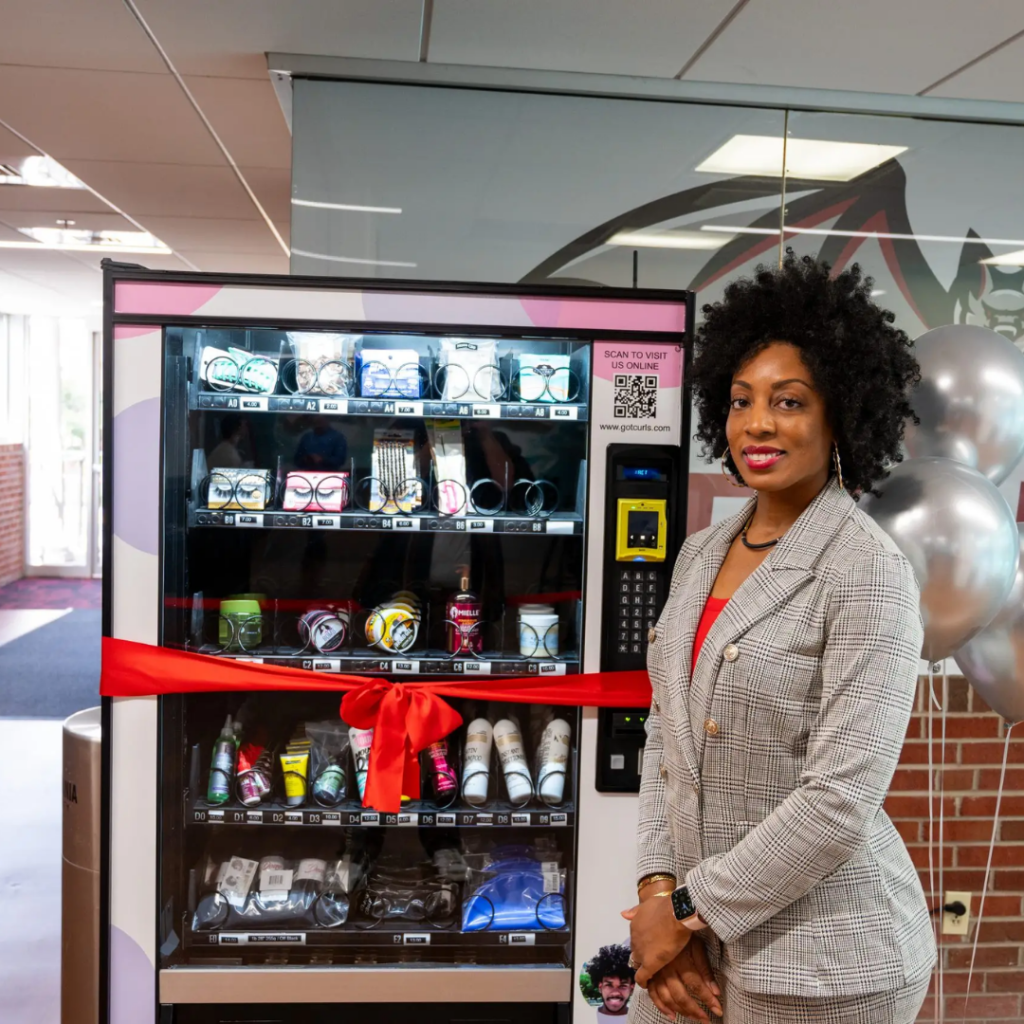Export ready American built machines in stock, shipping from Miami
How Many Vending Machines Are Needed To Make $100K A Year

Setting the Goal: Earning $100,000 a Year from a Vending Machine Business
Many new vending machine operators and investors ask a simple question: Can I make $100,000 a year from vending machines? The answer depends on how we define that target. Are we talking about gross revenue (total sales before expenses) or net profit (earnings after costs)? The difference between those two can be the difference between a small side business and a full-time income.
For most entrepreneurs, $100,000 in annual profit represents a clear financial milestone, the point where the vending business becomes a serious income stream rather than a hobby. Others aim for $100,000 in gross sales as an achievable first-year benchmark for growth. In either case, understanding what that figure means is key to building a realistic plan.
Why This Target Matters
The vending industry attracts both small investors and full-scale operators because of its low barriers to entry, steady demand, and scalability. According to industry reports, the global vending machine market is valued in the tens of billions of dollars and continues to grow as more consumers seek convenient, automated retail experiences. Yet, the income potential of a single vending machine varies widely. Some machines in poor locations might earn only $300 a month in sales, while others in high-traffic areas, such as transportation hubs or office towers, can bring in several times that amount.
Modern new vending machines are evolving quickly. Smart and connected systems now offer fresh food, beverages, and specialty products with advanced payment options and remote monitoring. This growth in technology and product variety gives operators more ways to reach higher sales and profit goals. The $100,000 target can be achieved through the right mix of machine types, product selection, and high-traffic locations.
What This Article Will Cover
This article breaks down what it actually takes to reach that $100,000 figure. We will explore:
- The key variables that determine your vending machine income, such as location, machine type, and profit margins.
- Typical revenue and profit benchmarks for single machines.
- How many machines you might need to reach $100,000 per year in either sales or net profit.
- Operational challenges and scaling considerations as your business grows.
- Practical modeling steps to build your own $100K vending business plan.
By the end, you will have a clear framework to estimate how many machines, what types, and what level of performance you need to hit your income goal.
Understanding Key Variables That Determine Vending Machine Income
Reaching $100,000 a year from vending machines depends on several controllable factors. Each machine’s performance is shaped by where it is placed, what it sells, and how efficiently it is managed. By understanding these variables, operators can estimate realistic returns and improve profitability over time.
1. Location and Foot Traffic
Location has the greatest impact on vending machine income. A machine in a quiet hallway or low-traffic office might sell only a few items a day. The same machine in a busy transportation hub, school, or apartment complex can sell hundreds. A poor location almost always means poor results, regardless of the products or machine type. Before committing to a site, observe foot traffic, consider customer behavior, and estimate how many daily transactions are realistic.
2. Machine Type and Product Mix
Not all vending machines earn the same amount. Traditional snack or beverage machines have lower average ticket values but steady demand. Combo vending machines that offer both snacks and drinks can increase total sales per visit. Specialty or modern vending machines that offer fresh food, healthy options, or niche products can command higher prices and margins. Selecting the right machine type and product mix for each location is one of the strongest levers for increasing revenue per unit.
3. Revenue vs. Profit Margin
Gross revenue is the total amount of sales your machines generate. Net profit is what remains after all costs. Common expenses include cost of goods sold (COGS), location rent or commission, maintenance, restocking labor, utilities, and payment processing fees. Industry data suggests that net profit margins between 20 and 25 percent are typical for well-managed vending businesses. For example, if a machine earns $1,000 a month in sales, a 25 percent margin would produce about $250 in monthly profit.
4. Operational Efficiency and Scale
Efficiency improves as your route grows. With multiple machines, you can streamline deliveries, reduce travel time, and use cloud-based vending software to monitor stock levels and performance remotely. Efficient restocking and maintenance can lower operating costs per machine and improve profitability. Over time, operators who build smart routes and use data-driven systems tend to achieve better margins and steadier cash flow.
5. Initial Investment and Financing
Startup costs vary by machine type and technology. A refurbished snack machine may cost under $3,000, while a new smart vending unit can cost $6,000 to $10,000 or more. Add costs for installation, product inventory, and payment systems such as cashless or mobile payment readers. If you use financing or leasing, monthly debt payments reduce short-term profit but allow faster expansion. Calculating your expected return on investment helps determine how many machines you can realistically operate to reach your income goal.
Revenue and Profit Benchmarks: What a Single Vending Machine Can Produce
To understand how to reach $100,000 in annual income, it helps to know what a single vending machine can realistically earn. Industry reports show a wide range of results based on location, product mix, and management. Some machines perform well enough to generate strong profits, while others barely cover their costs.
Typical Revenue Ranges
According to multiple sources, an average vending machine in a decent location might generate between $300 and $1,500 per month in gross sales. Machines in low-traffic areas might bring in only $75 a month or less, while those in prime locations such as transit stations or universities can exceed $1,500 monthly. These figures highlight how sensitive vending revenue is to placement quality.
Typical Profit Margins
After deducting expenses such as cost of goods sold, rent or commission to the location owner, maintenance, and restocking costs, operators generally achieve net profit margins around 20 to 25 percent. In practice, this means that only about one-fifth to one-quarter of gross sales remain as profit after expenses. A machine generating $1,000 in monthly revenue might yield about $200 to $250 in net profit.
Example Scenarios
The following examples illustrate how monthly performance translates to annual results:
- Scenario A – Modest machine in an average location: $350 per month in sales results in about $4,200 in annual revenue. With a 20 percent profit margin, that equals about $840 in yearly profit.
- Scenario B – Good location machine: $1,000 per month in sales equals $12,000 in annual revenue. At a 25 percent margin, annual net profit is roughly $3,000.
- Scenario C – Premium location, high-volume machine: $1,500 per month in sales equals $18,000 in annual revenue. At a 25 percent margin, annual net profit is about $4,500.
These scenarios show how performance can vary across locations and product types. Machines in high-traffic, well-managed areas often earn several times more than those in weaker sites. Understanding these benchmarks allows you to estimate how many machines you would need to meet a specific income goal.
How Many Vending Machines Are Needed to Reach $100,000 a Year
Once you understand the income potential of a single vending machine, you can estimate how many units are required to reach your financial goal. The calculation depends on whether you aim for $100,000 in gross revenue or $100,000 in net profit. Both are valid targets, but they represent very different levels of scale and investment.
Gross Revenue Target
If your goal is $100,000 in gross revenue per year, you can divide that figure by your expected average revenue per machine. Using the earlier benchmark of $12,000 per machine annually (from a good location example), the math looks like this:
$100,000 ÷ $12,000 = 8.3 machines
In practical terms, you would need about 9 machines performing at this average level to reach $100,000 in total yearly sales. Operators who focus on prime locations or more advanced modern vending machines may achieve higher sales per unit, reducing the total number required.
Net Profit Target
If your goal is $100,000 in net profit, the calculation changes significantly. Using the same example where a machine produces about $3,000 per year in net profit (based on $12,000 annual revenue at a 25 percent margin), the result is:
$100,000 ÷ $3,000 = 33.3 machines
You would therefore need around 34 machines generating consistent results to achieve $100,000 in yearly net profit. This shows how important margins and performance are when scaling a vending business.
Comparison Table: Machines Needed to Reach $100K Net Profit
| Machine Performance Level | Annual Net Profit per Machine | Machines Needed for $100K Net Profit |
|---|---|---|
| Low Performance | $1,000 revenue per month (~$200 net per month, $2,400/year) | About 42 machines |
| Average Performance | $12,000 annual revenue (~$3,000 net) | About 34 machines |
| High Performance | $18,000 annual revenue (~$4,500 net) | About 23 machines |
Interpreting the Numbers
These examples show that machine performance greatly affects how quickly you can scale to $100,000. A small increase in per-machine revenue or margin can significantly reduce the total number of units required. Operators who focus on high-traffic locations, use smart vending machines, and maintain tight cost control often reach profitability goals faster than those who expand without improving performance.
Choosing whether your target is gross revenue or net profit will guide your business plan, investment size, and operational strategy. The next logical step is to think about what it takes to manage that many machines efficiently and profitably.
Scaling Considerations: What It Takes to Manage Many Vending Machines
Operating a few vending machines can often be handled as a side business. Once your route grows to dozens of machines, the work becomes more complex. Scaling successfully requires planning, organization, and efficient systems that keep costs under control while maintaining reliable service for each location.
Logistics and Operations
As your business expands, restocking, route planning, and maintenance become daily challenges. Grouping machines by geographic area saves time and fuel. Using cloud-based vending software allows you to track inventory levels, sales data, and technical alerts remotely, which helps prevent downtime and wasted trips. A structured route schedule also reduces labor hours per machine and increases profitability.
Location Management
Each new location adds revenue potential but also increases administrative work. You must manage contracts, rent or commission payments, and site relationships. Good locations often involve agreements that include exclusivity or performance expectations. Using a location matching service can help you find high-traffic spots that align with your machine type and target audience.
Payment Systems
Modern payment options are essential for scaling. Cashless readers, mobile payments, and age-verification systems increase convenience and reduce the time spent collecting coins or bills. Machines equipped with cashless and mobile payment systems tend to record higher transaction volumes because customers can buy quickly without needing cash.
Maintenance and Unexpected Costs
More machines mean a higher chance of technical issues, product spoilage, or vandalism. A maintenance plan helps prevent long downtime periods that can reduce revenue. Keeping a small inventory of spare parts and partnering with reliable service providers helps maintain uptime. Utilities and product costs can rise, so regular reviews of supplier pricing are necessary to protect profit margins.
Workforce and Outsourcing
At scale, you may not be able to handle all operations personally. Hiring part-time restockers or contracting local operators can free up your time for business development. Your time becomes a measurable cost, so it is important to track labor hours and assign them fairly when calculating net profit.
Financing and Cash Flow
Expanding your route usually requires additional machines and vehicles. Financing options such as equipment loans or leases can make growth possible without heavy upfront spending. However, each new payment affects monthly cash flow. Using a reliable vending financing service can help balance expansion with profitability by matching repayment terms to machine performance.
Managing a growing vending business is a balance between efficiency and oversight. Operators who invest early in systems, automation, and smart route design are better prepared to scale smoothly and maintain profitability as their machine count increases.
Improving Performance to Reduce the Number of Machines Needed
The easiest way to reach $100,000 in annual revenue or profit is not always by adding more vending machines. Increasing the performance of each existing machine can reduce the total number required to meet your goal. Higher per-machine revenue and better profit margins come from smart decisions about location, product mix, pricing, and technology.
Optimizing Location
Location remains the strongest driver of vending income. Relocating underperforming machines or upgrading to higher traffic areas can make a major difference. Look for places with steady daily visitors, such as office complexes, schools, hospitals, and apartment buildings. Use a location matching service to identify and secure better sites. Negotiating fair commission rates and clear contracts also protects long-term profitability.
Product Mix and Pricing
Review your sales data to see which items sell fastest and which generate the highest margins. Replacing slow movers with higher margin snacks, beverages, or fresh food options can increase profits without raising costs. Periodic product rotation keeps customers engaged. Adjusting prices slightly, even by a few cents, can lift margins across all sales. Pairing complementary products or offering bundle discounts also helps increase transaction value.
Upgrading Machine Type
Older or basic machines often limit what you can sell and how efficiently you can operate. Investing in smart vending machines that provide analytics, inventory alerts, and cashless payments can improve sales consistency and reduce downtime. Machines with larger capacity or dual temperature zones support a wider product range and better serve customer demand in busy areas.
Reducing Overhead Costs
Controlling expenses is as important as increasing sales. Use cloud vending software to plan efficient routes and avoid unnecessary trips. Remote monitoring reduces restocking visits and helps track stock levels in real time. Managing spoilage, negotiating supplier discounts, and maintaining equipment proactively all help protect your profit margins. Lower costs per machine mean higher net income overall.
Marketing and Promotions
Even vending machines benefit from basic marketing. Use eye-catching graphics, limited-time offers, or loyalty programs to encourage repeat purchases. Promote your vending machines through building newsletters or local social media pages. These small efforts can raise awareness, increase foot traffic, and drive more consistent sales at each site.
Example: Doubling Net Profit per Machine
If you currently earn about $3,000 in annual profit per machine, improving efficiency, upgrading equipment, and optimizing locations could raise that to $6,000 per machine. At that level, you would need only about 17 machines instead of 34 to reach $100,000 in annual profit. Focusing on quality and performance rather than just quantity allows you to grow faster with less capital and less operational complexity.
By continuously improving machine performance, you can build a leaner, more profitable vending operation that reaches high income goals with fewer assets and lower maintenance demands.
Risk Factors and What Can Pull Back Vending Machine Performance
Even a well-planned vending machine business can face challenges that reduce revenue or profit. Understanding these risks early helps operators plan for them and build resilience into their business model. Many factors that limit performance can be managed or minimized through careful planning and consistent monitoring.
Poor Location or Low Foot Traffic
Location quality is the single largest variable in vending success. Machines placed in low-traffic areas or in buildings with limited customer access often underperform. Before installing a machine, observe traffic patterns, measure daily visitor counts, and consider customer demographics. A high-traffic site with good visibility almost always outperforms a cheaper but quiet location.
High Competition Nearby
Having too many machines in one area or competing directly with convenience stores and cafeterias can reduce your sales. Spread your machines across diverse locations and product categories to minimize internal competition. Conduct local research before placing new machines to avoid oversaturated areas.
High Commission or Rent Costs
Some property owners charge high placement fees or a large share of sales revenue. These costs can reduce margins significantly. Always calculate expected profit after commission and negotiate terms that align with your performance targets. A slightly lower-traffic site with better commission terms may yield higher overall profit.
Machine Downtime and Maintenance Problems
Every hour a machine is out of order is lost income. Technical issues, power failures, or delayed repairs can cut deeply into profit. Regular maintenance schedules, remote monitoring, and reliable service partners help prevent long downtime periods. Keeping spare parts on hand for common failures, such as bill validators or coin mechanisms, also reduces response time.
Product Spoilage and Wrong Product Mix
Products that expire before selling or fail to meet customer preferences lower profit margins. Track sales by product and adjust inventory accordingly. Machines in offices may need healthy options, while schools might favor drinks and snacks with moderate pricing. Aligning stock with local demand keeps waste low and sales high.
Rising Costs
Increases in wholesale prices, utilities, or labor directly affect net profit. Review supplier contracts regularly and look for more cost-effective sourcing. Route optimization through cloud vending management software can help control fuel and labor costs. Small efficiency improvements add up to better margins across all machines.
Limited Payment Options
Machines that only accept cash can lose sales as more customers rely on cards and mobile wallets. Upgrading to cashless payment systems expands your potential customer base and often increases average transaction values. It also reduces the time spent collecting and handling cash.
Overestimating Performance or Under-Capitalizing
Many new operators expect immediate results and underestimate the working capital needed for restocking, maintenance, and route management. Always build a financial buffer to handle months when revenue falls short. Conservative projections help you stay profitable and avoid cash flow strain.
Regulatory and Compliance Issues
Specialized machines, such as those offering age-restricted or niche products, may require additional permits or verification systems. Always check local regulations before installing machines of this type. Compliance helps avoid fines, interruptions, or forced removal of machines.
Identifying and managing these risk factors keeps your vending operation stable and helps you sustain profitability as you expand. Successful operators continually monitor performance data and address small problems before they grow into major losses.
Practical Steps to Model and Plan Your Own $100K Vending Machine Business
Reaching $100,000 in annual revenue or profit is achievable when you take a structured approach. Building a detailed financial and operational model helps you set realistic goals, estimate costs, and plan growth in manageable stages. The steps below outline how to create a practical plan based on your own numbers and resources.
Step 1: Estimate Revenue per Machine
Start by researching local conditions. Talk to other operators, check public spaces, and measure foot traffic where you plan to place machines. Use averages from your area to estimate realistic monthly sales for each location. Conservative estimates help prevent disappointment and improve financial accuracy.
Step 2: Estimate Net Margin After Expenses
List every operating cost, including cost of goods sold (COGS), location rent or commission, utilities, maintenance, payment processing fees, and labor for restocking. Subtract these from your projected sales to determine your expected profit margin. Many vending operators achieve net margins of 20 to 25 percent, though margins can be higher with good management and modern equipment.
Step 3: Decide Whether the $100K Goal Is Gross or Net
Clarify your target before scaling. If your goal is $100,000 in gross revenue, you may reach it faster with fewer machines. If you aim for $100,000 in net profit, you will need more units or higher per-machine performance. Knowing which metric you are working toward keeps your strategy focused.
Step 4: Compute the Number of Machines Needed
Divide your target income by your expected profit per machine to find how many machines you need. For example:
Machines Needed = Target Profit ÷ Net Profit per Machine
If your average net profit per machine is $3,000 a year, you would need about 34 machines to reach $100,000 in annual profit. If you can raise your net to $6,000 per machine, you would need about 17 machines.
Step 5: Estimate Capital Investment
Calculate the total cost to acquire and install your machines. Include purchase or lease price, payment system costs, initial inventory, and installation expenses. Explore financing services for vending machines to spread startup costs and maintain healthy cash flow as you expand.
Step 6: Build an Operational Model
Plan how you will manage your route, restocking, and maintenance. Use cloud vending management software to monitor stock levels and automate reports. Consider whether you will handle servicing yourself or outsource part of the work. Streamlining operations early prevents costly inefficiencies later.
Step 7: Create a Risk Buffer
Include lower-performing machines and downtime in your model. Budget for unexpected repairs, supply delays, or slow months. A 10 to 20 percent buffer helps protect your business from short-term setbacks and ensures smoother cash flow.
Step 8: Grow Gradually
Start small, ideally with one to five machines. Track performance, test different product mixes, and analyze location data before scaling further. Partnering with a location matching service can help secure better placements as your experience grows. Expand once your operations are stable and profitable.
Step 9: Monitor and Adjust Performance
Use analytics to compare each machine’s results and identify underperformers. Remote monitoring tools show which machines need restocking or repairs, and which products sell best. Reposition or replace machines that consistently underperform to keep your portfolio efficient.
Step 10: Set a Timeline with Milestones
Create measurable goals for your first year and beyond. Examples include reaching your first 10 machines within 12 months, achieving $X in monthly profit by month 18, and expanding to full scale by year three. Regular reviews keep your plan on track and help you adjust to real-world conditions.
These practical steps give you a clear roadmap for planning and growing your vending machine business. By basing your projections on real data and maintaining disciplined operations, you can steadily progress toward a $100,000 annual income goal.
Example Case Study: Building Toward a $100,000 Vending Machine Business
Real-world examples help show what it takes to reach a six-figure income in the vending industry. While every route and location mix is different, operators who follow a structured approach and focus on performance tend to see steady progress toward their financial goals.
Example Operator Overview
Consider an operator who manages a mix of snack, beverage, and combo vending machines in office buildings and schools. On average, each machine earns about $1,000 per month in sales, producing roughly $250 per month in profit after expenses. That equals about $3,000 in annual net profit per machine, which aligns with common industry benchmarks.
To reach $100,000 in annual profit at this rate, the operator needs around 34 machines performing consistently throughout the year. This scale can be achieved by adding a few machines each quarter and reinvesting profits back into new equipment and better locations.
Improving Machine Profitability
After reviewing sales data, the operator upgrades several older units to smart vending machines with cashless payment readers and remote monitoring. This upgrade raises average revenue per machine to about $1,500 per month, improving net profit margins to 30 percent. Profit per machine climbs to about $5,400 annually.
At this new performance level, the operator now needs only 19 machines to generate $100,000 in yearly profit. By focusing on efficiency and high-quality locations, the business achieves the same income goal with fewer assets and lower maintenance costs.
What the Case Study Demonstrates
- Incremental improvements in revenue and efficiency can dramatically reduce the total number of machines needed.
- Upgrading to modern equipment and better locations is often more profitable than rapid expansion.
- Profitability depends more on smart operations than on the total number of machines owned.
“What If” Variations
If each machine earned only $2,000 in annual net profit, the operator would need about 50 machines to reach $100,000. Conversely, if machines averaged $6,000 in annual profit, only about 17 machines would be required. These simple calculations show why monitoring margins and optimizing each unit’s performance matter as much as expansion itself.
This example demonstrates that reaching a $100,000 income from vending machines is realistic when operators use data, choose strong locations, and invest in modern equipment. Consistent performance improvements create lasting growth without unnecessary scale.
Conclusion and Key Takeaways
Reaching $100,000 a year from a vending machine business is an achievable goal, but it depends on performance, planning, and discipline. The number of machines required can vary widely based on how much each unit earns and how efficiently you manage operations. Some operators reach this target with fewer than 20 high-performing machines, while others may need 30 or more average units to reach the same result.
The most important factors are those within your control: selecting high-traffic locations, offering the right product mix, maintaining strong margins, and using modern systems to streamline operations. Investing in cloud vending management software, cashless payment systems, and reliable location matching services helps increase revenue and reduce costs across your route.
Success in vending does not come from simply buying a set number of machines. It comes from understanding how each unit performs and continuously improving that performance. Start small, gather data, and refine your approach. Once you have a few profitable machines operating smoothly, scaling to a larger network becomes more predictable and sustainable.
Use the framework outlined in this article to calculate your own path toward $100,000. Plug in your numbers, analyze your margins, and decide how many machines and what level of performance you need. The vending business rewards consistent effort, careful planning, and smart reinvestment. Begin with one machine, track results, and build from there. Over time, a focused, data-driven approach can turn a small route into a reliable six-figure business.


